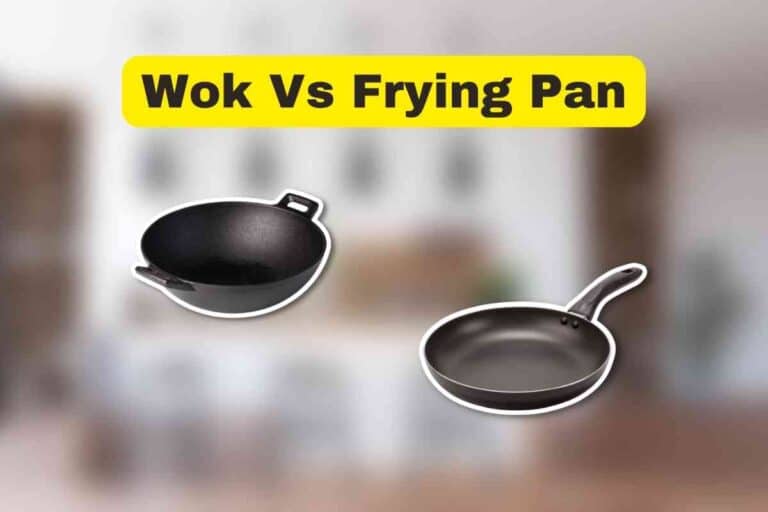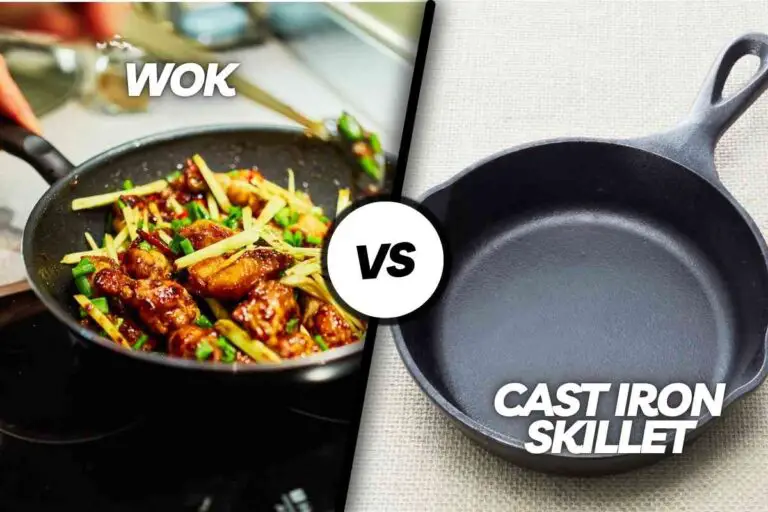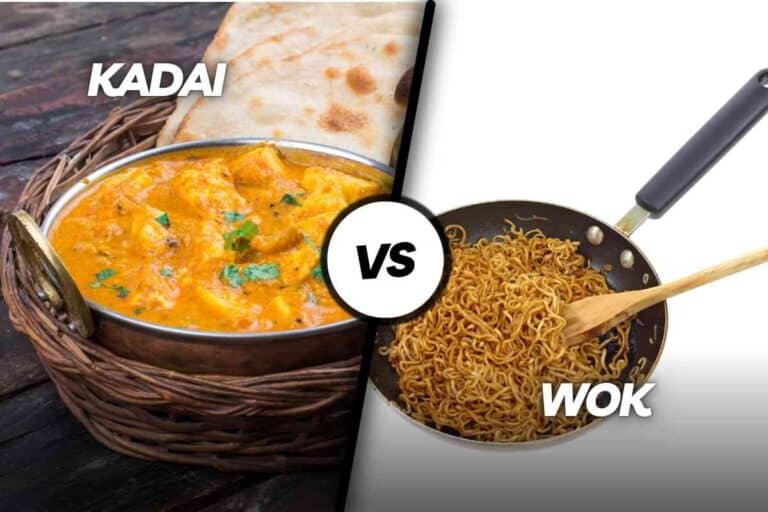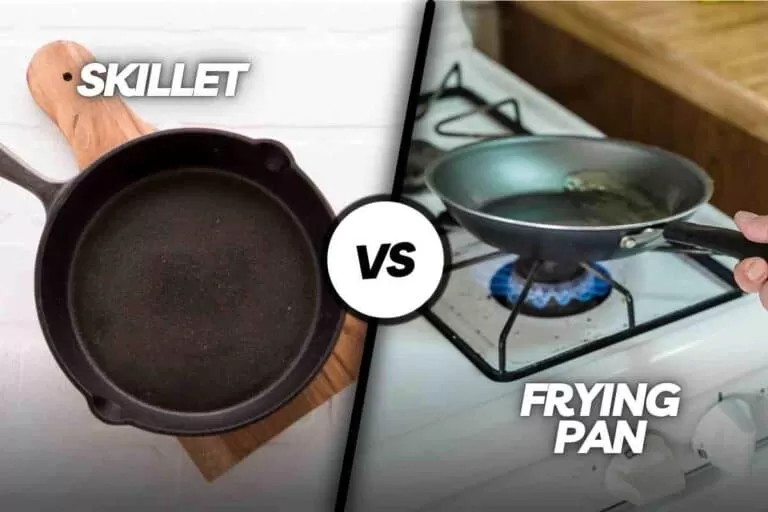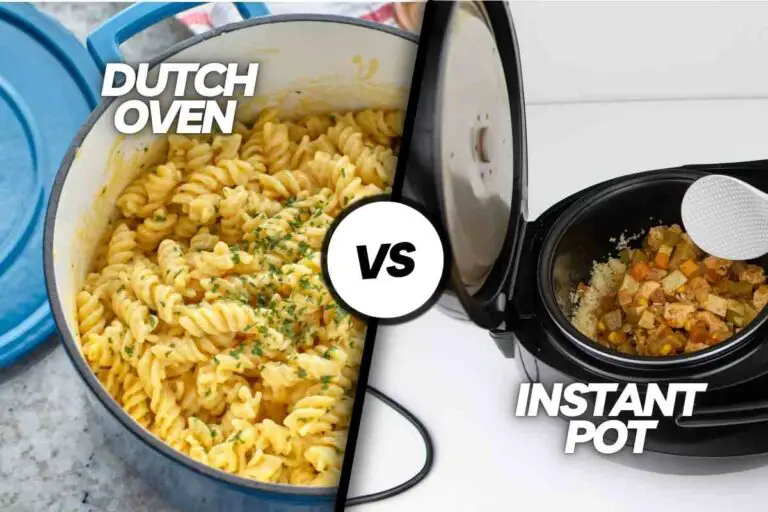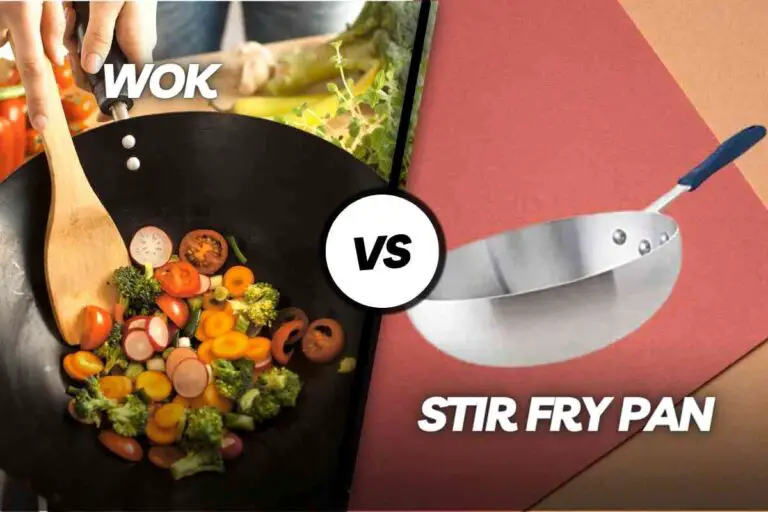Wok Vs Saucepan – Which is Better?
When it comes to cooking in a stir-frying pot, you might wonder what the difference is between a Wok and a saucepan.
But which one is better for cooking? Let’s find out.
In this article, we will discuss the differences between these two cooking tools and what each one is best for.
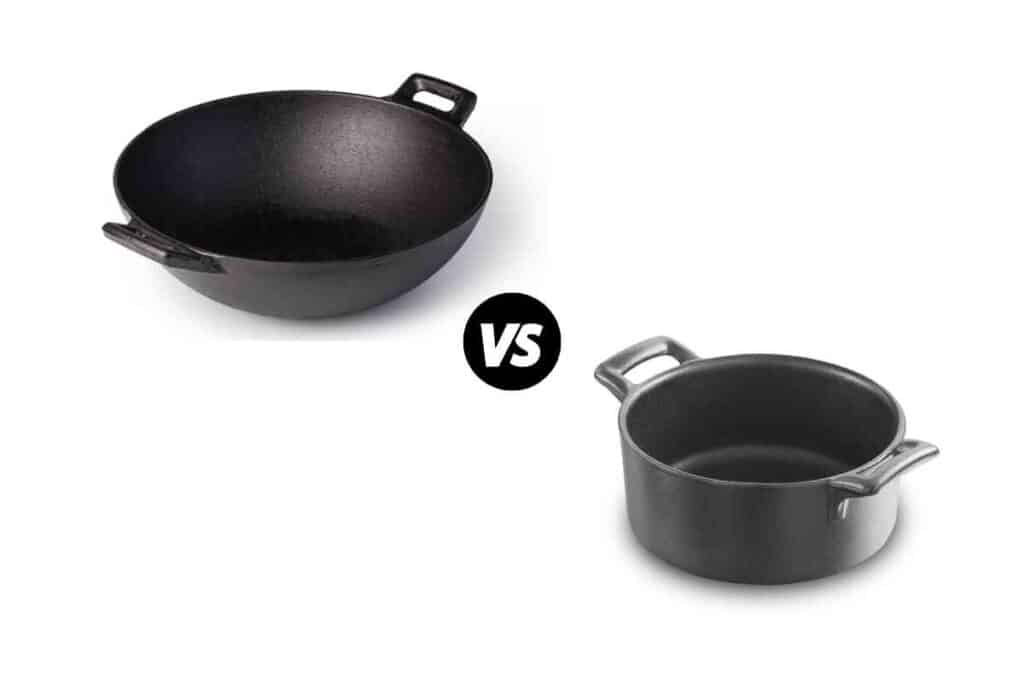
What Is a Wok?
A wok is a traditional Chinese cooking pot with high sides and a round bottom. It can be used to stir fry, steam, braise, poach, roast, and boil foods.
The high sides of a wok help distribute heat evenly and make for faster cooking. This type of cooking pot is also useful for tossing and roasting foods.
A wok is one of the most basic cooking tools. It is made of carbon steel and is hand-forged.
This process gives the wok its distinctive edge and angles, which make it easier to push food up the sides of the pot.
The wok is thought to have originated in China, during the Han dynasty, between 202BC and 220AD.
A wok can be used for several types of cooking, including stir-frying, pan-frying, and deep-frying. It can also be used for boiling, braising, and stewing.
What Is a Saucepan?
If you’ve ever wondered what a saucepan is, it’s a kind of cookware used to heat liquids. The shape and design of a saucepan resemble that of a pot, but its handle is longer.
It also features a flat bottom, which prevents spills when cooking liquid foods.
They also come in different sizes, some deeper than others. They can be made from stainless steel, copper, or cast iron.
While pots and saucepans are often used interchangeably, they serve different purposes.
Pans are primarily used to heat the liquid, while pots are larger, with deep sides. In addition to cooking liquids, pans can be used to cook various other foods.
Which One to Use for Stir-frying?
One of the best types of the pan to use for stir-frying is a wok. These skillets have a large surface area and retain heat better than saucepans and other pots.
This is especially important if you’re using an electric stove since many electric stove elements have trouble retaining heat.
Another factor when stir-frying is the selection of the best oil. There are many types of oils to choose from when cooking stir-fried food.
You can use vegetable oil, avocado oil, canola oil, or extra virgin olive oil.
Some oils are better for stir-frying than others, and you can even use butter. The key is to choose a fat that can withstand high heat and keep the flavor of the food.
Which Is Better for Cooking?
Woks are generally used for stir frying because they retain heat more efficiently than saucepans. When cooking a stir fry, a wok is necessary to maintain a consistent heat.
While saucepans make great cookware, the wok is a cooking tool that is superior to the saucepan.
Woks are designed to evenly heat food and are better for stir frying or shallow frying foods like vegetables, meat, fish, and shrimp.
A saucepan is used to cook pasta or make sauces. It has straight sides and a lid to keep ingredients from escaping.
Saucepan vs Wok : Cooking Benefits
The wok is more versatile than a saucepan, allowing you to cook a larger quantity of food without creating a mess.
It also cooks food more evenly, which helps prevent overcooking. This is especially important for Asian food, such as pad Thai or kung pao chicken.
Woks are typically round, but you can also buy flat bottomed ones. They are made of cast iron or carbon steel, and the best ones are hammered with multiple layers of steel.
Some woks are also made of hard-anodized aluminum. A wok is a large, heavy pan that can be difficult to handle. It’s also difficult to lift.
You may want to invest in a wok turner to help you lift it out of the pan.
Carbon steel and stainless steel woks are lighter than cast iron. However, the handle of a wok can get quite hot.
Related Posts:

